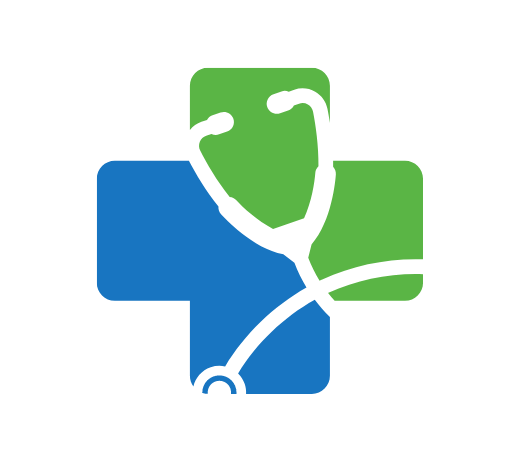
Facing aggressive patients is one of the most significant and distressing challenges healthcare professionals encounter in dynamic clinical settings, demanding a robust blend of empathy and safety-focused strategies to protect everyone involved. This is a critical skill that we must master to ensure both our well-being and the continuity of quality patient care under immense pressure.
Identifying the Root Causes of Patient Aggression
We have to recognize that aggressive behavior in a healthcare environment is seldom a simple act of malice; it is most often a manifestation of underlying distress or a response to a perceived loss of control. Factors such as intense pain, profound anxiety, overwhelming fear of a diagnosis, or simple frustration due to long waiting times can act as powerful catalysts for hostility. When a patient or a family member becomes verbally abusive, we should view it through a lens of clinical risk assessment rather than personal offense, searching for the unmet need or the source of their helplessness. This perspective allows us to depersonalize the attack and adopt a more effective, solution-oriented stance.
The Art of Verbal De-escalation Techniques
The immediate goal in any escalating situation is to de-escalate the tension before it progresses to physical harm, and the most crucial tool we possess is our voice. We must maintain an unwavering sense of calm, speaking in a low, steady tone that contrasts with the patient’s heightened state, which often encourages them to mirror our composure. Acknowledging the patient’s feelings—not necessarily their actions—is key; saying something like, “We can see that the delay is extremely frustrating for you, and we want to help resolve this,” can immediately validate their emotion and build a crucial bridge of trust. It is paramount to avoid arguing or defending ourselves, as this will only fuel the confrontation, shifting the focus away from the patient’s core problem.
Non-Verbal Cues and Environmental Safety
Our body language communicates far more powerfully than our words, especially when dealing with an agitated individual. We need to ensure we maintain an appropriate personal space, often described as a two-arm-length distance, which provides a safety buffer for both parties and reduces the feeling of being threatened. Adopting an open and relaxed posture, such as keeping our hands visible and avoiding crossing our arms, signals that we are non-confrontational and approachable. Critically, we should always position ourselves closest to the exit door, ensuring that we are never cornered or blocked in the room, making our personal safety a non-negotiable priority. Furthermore, discreetly moving any potential weapons, like heavy objects or sharp instruments, out of sight contributes significantly to the overall environmental safety plan.
Establishing Clear and Firm Boundaries
While empathy is vital, it must be paired with clear, non-negotiable boundaries to manage the behavior. We must politely but firmly communicate what constitutes acceptable conduct in the clinical setting. A clear statement such as, “We are here to help you get the best possible care, but we cannot proceed while you are shouting at the staff,” is an example of setting a boundary while simultaneously reaffirming our commitment to their well-being. If the behavior persists after setting a boundary, we should be prepared to activate the safety protocol, which often involves summoning security personnel or an emergency team, demonstrating that aggressive actions carry firm consequences.
Security Protocols in the Turkish Healthcare System
In Turkey, the issue of healthcare violence is addressed with a specific and rapid response system known as the “Beyaz Kod” or White Code. This is an emergency alarm activated by healthcare workers to signal an incident of violence or threat, immediately notifying hospital security and providing legal support for the victim. The consistent use and institutional support for the White Code demonstrate the serious effort to prosecute perpetrators and provide a deterrent effect within the system. This national system serves as a powerful reminder that we are not alone in facing these situations and that the law is structured to protect us in the execution of our duties, making it essential that all personnel know exactly how to trigger this system.
Mandatory Training and Institutional Support
Effective management of aggressiveness hinges on proactive preparation, not just reactive measures. Healthcare organizations must invest in regular, evidence-based training programs focused on conflict resolution and de-escalation techniques for all clinical staff. Such training equips us with the confidence to recognize early warning signs—like pacing, clenched fists, or a change in voice tone—and to apply learned strategies before the situation spirals out of control. A strong organizational commitment to zero tolerance for violence must be consistently communicated, reinforcing the message that our physical and psychological safety is an institutional priority.
Team Dynamics in Crisis Management
No single healthcare professional should be expected to manage a volatile patient entirely on their own; these are situations that absolutely demand effective teamwork. When a situation begins to escalate, the person who has the best rapport with the patient should take the lead in communication, while others should call for support and take positions to ensure the safety of the rest of the unit. We must establish a clear signaling system with our colleagues—a subtle hand gesture or a code word—to silently communicate when the situation is deteriorating and when external help is immediately needed. A unified, coordinated team response is always the most effective defense against a threatening situation.
Post-Incident Review and Learning
Following any incident involving a verbally or physically aggressive patient, a structured debriefing for all involved staff members is absolutely essential, providing both emotional support and a critical learning opportunity. We should collectively analyze what triggered the event, evaluate the effectiveness of the de-escalation strategies used, and identify any systemic factors that may have contributed to the aggression, such as a breakdown in communication or a problem with the waiting area environment. Documenting these incidents thoroughly is vital, as this data allows the organization to track trends, refine security protocols, and ensure that necessary preventive measures are implemented for the future.
The Legal Framework of Safety in the UAE
In the UAE, the commitment to workplace safety for healthcare professionals is taken very seriously, with the legal system providing robust protections against assault and abuse. The law views any act of aggression against a healthcare worker as a serious offense, often leading to criminal prosecution for the perpetrator. Institutions operating under the Dubai Health Authority (DHA) or the Department of Health – Abu Dhabi (DoH) adhere to strict patient safety and quality standards that mandate the implementation of policies to prevent violence and support staff. This strong legal and institutional environment reinforces the necessity of reporting every single incident, ensuring that the high professional standards of the healthcare sector are always maintained.
Prioritizing Self-Preservation in the Clinical Arena
Ultimately, handling aggressive patients boils down to a fundamental principle: self-preservation is a professional necessity. While our primary commitment is to the patient, we must first ensure our personal safety and the safety of our colleagues and other patients. If a situation escalates to the point of imminent physical danger, the most professional and correct action is to retreat immediately and summon the security team or police, as appropriate. We should never risk physical harm in an attempt to manage an out-of-control situation alone. This comprehensive guide and our professional conduct are designed to uphold this truth, as emphasized by the editor at www.turkishdoctor.ae.

 then "Add to Home Screen"
then "Add to Home Screen"